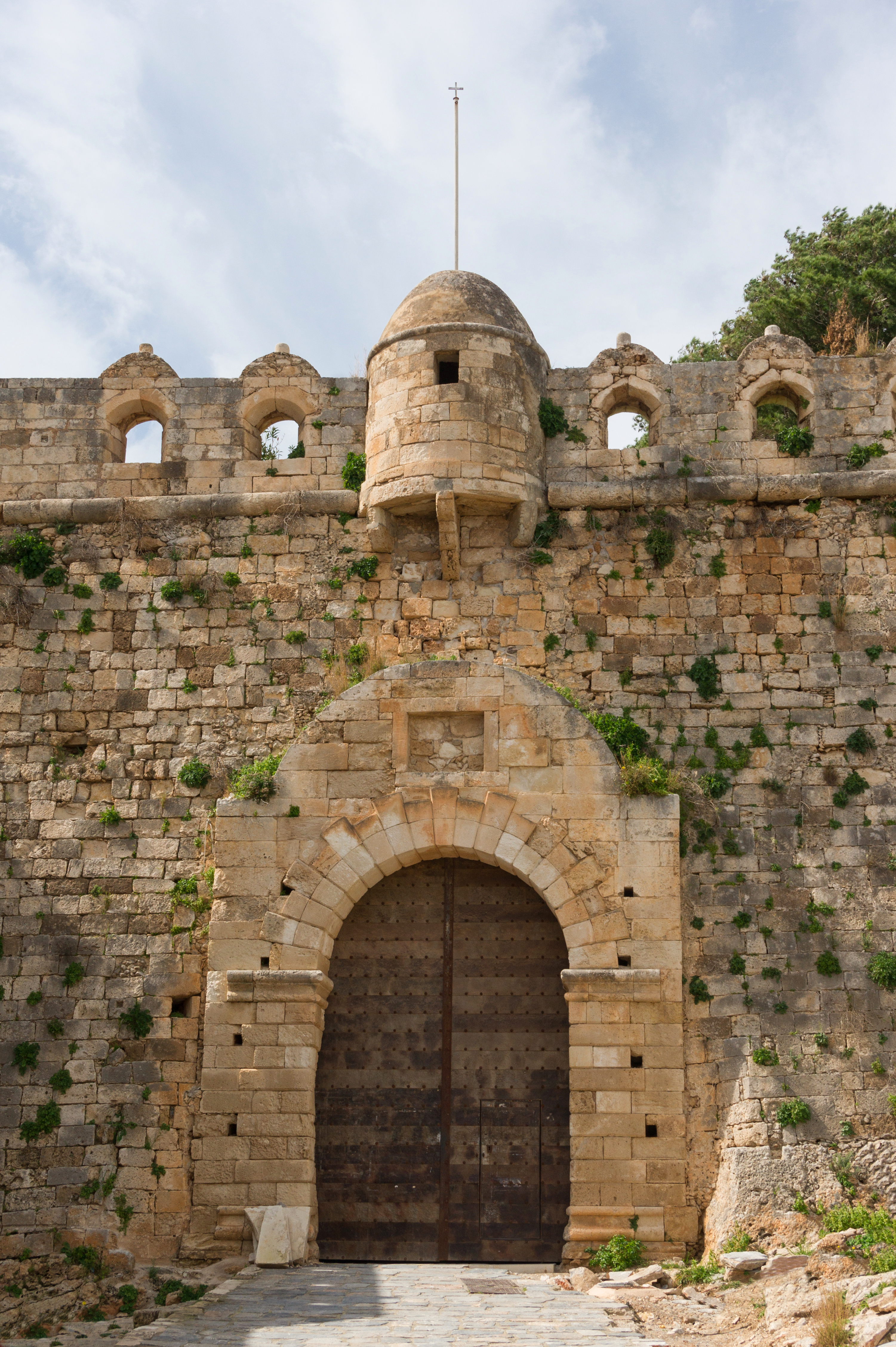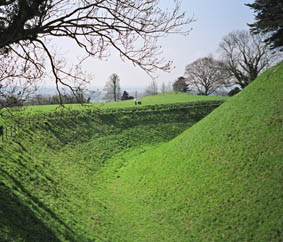|
Fortezza Of Rethymno
The Fortezza ( el, Φορτέτζα, from Italian for "fortress") is the citadel of the city of Rethymno in Crete, Greece. It was built by the Venetians in the 16th century, and was captured by the Ottomans in 1646. By the early 20th century, many houses were built within the citadel. These were demolished after World War II, leaving only a few historic buildings within the Fortezza. Today, the citadel is in good condition and is open to the public. History Background The Fortezza is built on a hill called ''Paleokastro'' (meaning "Old Castle"), which was the site of ancient Rhithymna's acropolis. Between the 10th and 13th centuries, the Byzantines established a fortified settlement to the east of the hill. It was called ''Castrum Rethemi'', and it had square towers and two gates. The fortifications were repaired by Enrico Pescatore in the beginning of the 13th century. After Crete fell to the Republic of Venice, the settlement became known as the ''Castel Vecchio'' or ''Antico ... [...More Info...] [...Related Items...] OR: [Wikipedia] [Google] [Baidu] |
Rethymno
Rethymno ( el, Ρέθυμνο, , also ''Rethimno'', ''Rethymnon'', ''Réthymnon'', and ''Rhíthymnos'') is a city in Greece on the island of Crete. It is the capital of Rethymno regional unit, and has a population of more than 30,000 inhabitants (near 40,000 for the municipal unit). It is a former Latin Catholic bishopric as Retimo(–Ario) and former Latin titular see. Rethymno was originally built during the Minoan civilization (ancient Rhithymna and Arsinoe). The city was prominent enough to mint its own coins and maintain urban growth. One of these coins is today depicted as the crest of the town: two dolphins in a circle. History This region as a whole is rich with ancient history, most notably through the Minoan civilisation centred at Knossos east of Rethymno. Rethymno itself began a period of growth when the Venetian conquerors of the island decided to put an intermediate commercial station between Heraklion and Chania, acquiring its own bishop and nobility in the ... [...More Info...] [...Related Items...] OR: [Wikipedia] [Google] [Baidu] |
Chania
Chania ( el, Χανιά ; vec, La Canea), also spelled Hania, is a city in Greece and the capital of the Chania regional unit. It lies along the north west coast of the island Crete, about west of Rethymno and west of Heraklion. The municipality has 108,642 inhabitants (2011). This consists of the city of Chania and several nearby areas, including Kounoupidiana (pop. 8,620), Mournies (pop. 7,614), Souda (pop. 6,418), Nerokouros (pop. 5,531), Daratsos (pop. 4,732), Perivolia (pop. 3,986), Galatas (pop. 3,166) and Aroni (pop. 3,003). History Early history Chania is the site of the Minoan settlement the Greeks called Kydonia, the source of the word quince. It appears on Linear B as ''ku-do-ni-ja''. Some notable archaeological evidence for the existence of this Minoan city below some parts of today's Chania was found by excavations in the district of Kasteli in the Old Town. This area appears to have been inhabited since the Neolithic era. The city reemerged after the end ... [...More Info...] [...Related Items...] OR: [Wikipedia] [Google] [Baidu] |
Archaeological Museum Of Rethymno
The Archaeological Museum of Rethymno is a museum in Rethymno, Crete, Greece. Larnax, Early Minoan, hunting scene, AM Rethymno, 076112.jpg, Early Minoan larnax. Larnax, hunting of deer and ibex, deer, dog, Prepalatial, AM, Rethymno, 076113.jpg, Minoan larnax, probably Prepalatial period. Larnax, ibex, Minoan, AM of Rethymno, 076116.jpg, Minoan larnax, probably Prepalatial period. Larnax, Minoan, Marine style, AM Rethymno, 076106.jpg, Minoan larnax, probably Neopalatioal period, Marine style Greek inscription, Eleutherna, 600-450 BC, AM Rethymno, 076104.jpg, Archaic Greek inscription (boustrophedon script), law against excessive drinking in Ancient Eleftherna, 600-450 BC. The building that houses the museum is the church of San Francesco, built by the Barozzi family around 1530. External linksMunicipality of RethymnoMinistry of Culture and Sports (odysseus.culture.gr), Archaeological Museum of RethymnoThe whole history of Crete in the church of Agios Francis Rethymno Rethymno ( ... [...More Info...] [...Related Items...] OR: [Wikipedia] [Google] [Baidu] |
Mosque
A mosque (; from ar, مَسْجِد, masjid, ; literally "place of ritual prostration"), also called masjid, is a place of prayer for Muslims. Mosques are usually covered buildings, but can be any place where prayers ( sujud) are performed, including outdoor courtyards. The first mosques were simple places of prayer for Muslims, and may have been open spaces rather than buildings. In the first stage of Islamic architecture, 650-750 CE, early mosques comprised open and closed covered spaces enclosed by walls, often with minarets from which calls to prayer were issued. Mosque buildings typically contain an ornamental niche ('' mihrab'') set into the wall that indicates the direction of Mecca (''qiblah''), Wudu, ablution facilities. The pulpit (''minbar''), from which the Friday (jumu'ah) sermon (''khutba'') is delivered, was in earlier times characteristic of the central city mosque, but has since become common in smaller mosques. Mosques typically have Islam and gender se ... [...More Info...] [...Related Items...] OR: [Wikipedia] [Google] [Baidu] |
Ravelin
A ravelin is a triangular fortification or detached outwork, located in front of the innerworks of a fortress (the curtain walls and bastions). Originally called a ''demi-lune'', after the ''lunette'', the ravelin is placed outside a castle and opposite a fortification curtain wall. The ravelin is the oldest and at the same time the most important outer work of the bastion fortification system. It originated from small forts that were supposed to cover the bridge that led across the moat to the city or fortress gate from a direct attack. From this original function, to protect the gate bridge, also comes its original Italian name "''rivellino''" (which means small bank work or with the German expression common for it: ''Brückenkopf'' – "bridge head"). Therefore, the ravelin was at first only a small work, which should only make the access to the bridge in front of the fortress gates more difficult. When it was realized in the 16th century that this would generally provid ... [...More Info...] [...Related Items...] OR: [Wikipedia] [Google] [Baidu] |
Cretan War (1645–1669)
The Cretan War ( el, Κρητικός Πόλεμος, tr, Girit'in Fethi), also known as the War of Candia ( it, Guerra di Candia) or the Fifth Ottoman–Venetian War, was a conflict between the Republic of Venice and her allies (chief among them the Knights of Malta, the Papal States and France) against the Ottoman Empire and the Barbary States, because it was largely fought over the island of Crete, Venice's largest and richest overseas possession. The war lasted from 1645 to 1669 and was fought in Crete, especially in the city of Candia, and in numerous naval engagements and raids around the Aegean Sea, with Dalmatia providing a secondary theater of operations. Although most of Crete was conquered by the Ottomans in the first few years of the war, the fortress of Candia (modern Heraklion), the capital of Crete, resisted successfully. Its prolonged siege, " Troy's rival" as Lord Byron called it, forced both sides to focus their attention on the supply of their respectiv ... [...More Info...] [...Related Items...] OR: [Wikipedia] [Google] [Baidu] |
Rethymno Sultan Ibrahim 08
Rethymno ( el, Ρέθυμνο, , also ''Rethimno'', ''Rethymnon'', ''Réthymnon'', and ''Rhíthymnos'') is a city in Greece on the island of Crete. It is the capital of Rethymno regional unit, and has a population of more than 30,000 inhabitants (near 40,000 for the municipal unit). It is a former Latin Catholic bishopric as Retimo(–Ario) and former Latin titular see. Rethymno was originally built during the Minoan civilization (ancient Rhithymna and Arsinoe). The city was prominent enough to mint its own coins and maintain urban growth. One of these coins is today depicted as the crest of the town: two dolphins in a circle. History This region as a whole is rich with ancient history, most notably through the Minoan civilisation centred at Knossos east of Rethymno. Rethymno itself began a period of growth when the Venetian conquerors of the island decided to put an intermediate commercial station between Heraklion and Chania, acquiring its own bishop and nobility in the ... [...More Info...] [...Related Items...] OR: [Wikipedia] [Google] [Baidu] |
Outwork
An outwork is a minor fortification built or established outside the principal fortification limits, detached or semidetached. Outworks such as ravelins, lunettes (demilunes), flèches and caponiers to shield bastions and fortification curtains from direct battery were developed in the 16th century. Later, the increasing scale of warfare and the greater resources available to the besieger accelerated this development, and systems of outworks grew increasingly elaborate and sprawling as a means of slowing the attacker's progress and making it more costly. When taken by an enemy force, their lack of rear-facing ramparts left them totally open to fire from the main works. [...More Info...] [...Related Items...] OR: [Wikipedia] [Google] [Baidu] |
Ditch (fortification)
In military engineering, a ditch is an obstacle designed to slow down or break up an attacking force, while a trench is intended to provide cover to the defenders. In military fortifications the side of a ditch farthest from the enemy and closest to the next line of defence is known as the scarp while the side of a ditch closest to the enemy is known as the counterscarp. Uses In early fortifications, ditches were often used in combination with ramparts to slow down the enemy whilst defensive fire could be brought to bear from the relative protection afforded by the rampart and possibly the palisade. In medieval fortification, a ditch was often constructed in front of a defensive wall to hinder mining and escalade activities from an attacker. When filled with water, such a defensive ditch is called a moat. However, moats may also be dry. Later star forts designed by military engineers like Vauban, comprised elaborate networks of ditches and parapets, carefully calculated ... [...More Info...] [...Related Items...] OR: [Wikipedia] [Google] [Baidu] |
Star Fort
A bastion fort or ''trace italienne'' (a phrase derived from non-standard French, literally meaning ''Italian outline'') is a fortification in a style that evolved during the early modern period of gunpowder when the cannon came to dominate the battlefield. It was first seen in the mid-fifteenth century in Italy. Some types, especially when combined with ravelins and other outworks, resembled the related star fort of the same era. The design of the fort is normally a polygon with bastions at the corners of the walls. These outcroppings eliminated protected blind spots, called "dead zones", and allowed fire along the curtain from positions protected from direct fire. Many bastion forts also feature cavaliers, which are raised secondary structures based entirely inside the primary structure. Origins Their predecessors, medieval fortresses, were usually placed on high hills. From there, arrows were shot at the enemies. The enemies' hope was to either ram the gate or ... [...More Info...] [...Related Items...] OR: [Wikipedia] [Google] [Baidu] |
Stato Da Màr
The ''Stato da Màr'' or ''Domini da Mar'' () was the name given to the Republic of Venice's maritime and overseas possessions from around 1000 to 1797, including at various times parts of what are now Istria, Dalmatia, Montenegro, Albania, Greece and notably the Ionian Islands, Peloponnese, Crete, Cyclades, Euboea, as well as Cyprus. It was one of the three subdivisions of the Republic of Venice's possessions, the other two being the ''Dogado'', i.e. Venice proper, and the ''Domini di Terraferma'' in northern Italy. The overseas possessions, particularly islands such as Corfu, Crete and Cyprus, played a critical role in Venice's commercial and military leadership. In his landmark study on the Mediterranean world in the 16th century, historian Fernand Braudel described these islands as "Venice's motionless fleet".''"Sur le grand axe de sa puissance, ces îles sont la flotte immobile de Venise."'' History The creation of Venice's overseas empire began around the year 1000 ... [...More Info...] [...Related Items...] OR: [Wikipedia] [Google] [Baidu] |





.jpg)

